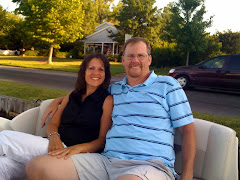"An apparent discrepancy exists at this point between John's chronology and that of the Synoptic Gospels. The latter clearly state that the Last Supper was a Passover meal (Matthew 26:17-19; Mark 14:12-16; Luke 22:7-15). John 18:28, however, records that the Jewish leaders "led Jesus from Caiaphas into the Praetorium, and it was early [Friday morning; the day of the crucifixion]; and they themselves did not enter into the Praetorium so that they would not be defiled, but might eat the Passover." Further, according to John 19:14 Jesus' trial and crucifixion took place on "the day of preparation fro the Passover," not the day after the eating of the Passover meal. thus the Lord was crucified at the same time that the Passover lambs were being killed (cf.19:36; Ex.12:46; Num.9:12). The challenge, then, is to explain how Jesus and the disciples could have eaten the Passover meal on Thursday evening if the Jewish leaders had not yet eaten it on Friday morning.
The answer lies in understanding that the Jews had two different methods of reckoning days. Ancient Jewish sources suggest that Jews from the northern part of Israel (including Galilee, where Jesus and most of the Twelve were from) counted days from sunrise to sunrise Most of the Pharisees apparently also used that method. On the other hand, the Jews in the southern region of Israel counted days from sunset to sunset.
That would include the Sadducees (who of necessity lived in the vicinity of Jerusalem because of their connection with the temple). though no doubt confusing at time, that dual method of reckoning days would have had practical benefits at Passover, allowing the feast to be celebrated on two consecutive days. That would have eased the crowded conditions in Jerusalem, especially in the temple, where all the lambs would not have had to be killed on the same day.
Thus, there is no contradiction between John and the Synoptics. Being Galileans, Jesus and the Twelve would have viewed Passover day as running from sunrise on Thursday to sunrise on Friday. They would have eaten their Passover meal on Thursday evening. the Jewish Elders (the Sadducees), however, would have viewed it as beginning at sunset on Thursday and ending at sunset on Friday. They would have eaten their Passover meal on Friday evening."
Another interesting side note, in this passage, is to consider the conversation between Jesus and Judas Iscariot, and the possible seating arrangement during the meal. This information comes from the Life Change series, in the book of John; and from the commentary by Leon Morris:
"The usual arrangement was to have a series of couches each for three persons arranged in a U round the table. The host, or the most important person reclined in the centre of the chief couch placed at the junction of the two arms of the U. The guests reclined with their heads towards the table and their feet stretched out obliquely away from it. They leaned on the left elbow, which meant that the right hand was free to secure food. The place of honor was to the left of, and thus slightly behind the principal person. the second place was to his right, and the guest there would have his head on the breast of the host. Plainly this was the position occupied by the beloved disciple.
We might have thought that Peter would have the place of honor. But he seems to have been too far from Jesus to whisper a question himself (13:24), and he could scarcely have mentioned to John if he was behind Jesus, who was behind John. Judas was near enough to receive a piece of food from him (13:26), so he may have had the place of honor. He was the group's treasurer (12:6; 13:29) an important role, and Jesus may have been making a subtle last appeal to him."
In the DVD: The Gospel of John, that we are watching during our message series, has a woman who is playing the part of Mary Magdalene. In the scene for the Last Supper, she is in the room with the fellas, and it just seems kind of strange. I figured that people watching this video would be thinking about that, so I thought I would address it here. In fact, over the next few chapters as Jesus speaks with His disciples, before He is arrested and dies, she is there with them.
This is one of those artistic licences we hear about, where a movie is imagining what it might have been like. The fact is that we don't know for sure; and the reason we assume no one else as there is because the passages usually do not mention it. However, the reason it is plausible, and that we don't know, is because the Bible does tell us, very briefly, that there was a group of women that travelled with Jesus, ministering to His needs and the needs of the group. But, we forget about that and don't really think about it, because it is not often mentioned.
The key passage for this fact is Matthew 27:55,56 - "There were also many women there, looking on from a distance, who had followed Jesus from Galilee, ministering to him, among whom were Mary Magdalene and Mary the mother of James and Joseph and the mother of the sons of Zebedee."

No comments:
Post a Comment